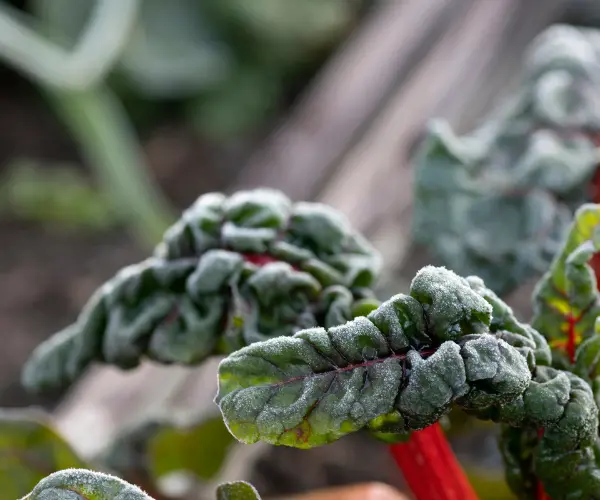As the seasons change and temperatures drop, we know that the work doesn’t stop with the arrival of winter. In fact, it’s a time when strategic care can make all the difference in preparing your garden for a flourishing spring ahead.
In this blog we’ll be providing some easy-actionable tips to protect and maintain your garden as we’re anticipating a very cold winter this year!
Common causes of winter garden damage
When winter settles in, it brings a unique set of challenges for gardens. Understanding the specific needs of your plants during this season is crucial for maintaining a healthy garden, as various stressors can negatively impact their health.

Frost Damage:
- Symptoms: Browning or blackening of leaves, wilting, and a mushy texture.
- Downfall: Frost can cause ice crystals to form within plant cells, leading to cellular damage and dehydration. This can compromise the structural integrity of the plant and impede its ability to perform essential functions.
- Remedy: Use frost cloths or row covers to shield vulnerable plants during cold nights. Water the soil before a frosty night; moist soil retains heat better. Consider grouping plants based on their cold tolerance.
Freezing Temperatures:
- Symptoms: Brittle or damaged foliage, discoloration, and slowed growth.
- Downfall: Prolonged exposure to freezing temperatures can lead to cellular damage and disrupt the plant’s metabolic processes. Ice formation within plant tissues can rupture cell walls, causing irreversible harm.
- Remedy: Apply a layer of mulch around the base of plants to insulate roots from extreme temperatures. Wrap sensitive plants with burlap or other protective materials. Avoid pruning in late fall to minimize new growth that can be susceptible to freezing.

Inadequate Plant Insulation:
- Symptoms: Dieback of branches, especially at the tips, and overall decline in plant health.
- Downfall: Lack of proper insulation exposes plants to the harsh elements. Without adequate protection, sensitive plant parts, such as buds and young shoots, become vulnerable to cold stress, potentially resulting in dieback.
- Remedy: Install windbreaks, such as burlap screens or constructed barriers, to protect plants from drying winter winds. Consider planting evergreen shrubs or erecting temporary barriers to shield vulnerable plants.
Dry Winter Winds:
- Symptoms: Desiccation, or drying out, of leaves and plant tissues.
- Downfall: Winter winds, particularly when combined with low humidity, can accelerate water loss from leaves. This can lead to desiccation, making the plant more susceptible to damage from freezing temperatures.
- Remedy: Water plants deeply before the ground freezes to ensure they enter winter well-hydrated. Monitor soil moisture levels; avoid overwatering, as waterlogged soil can lead to root rot.

Snow and Ice Accumulation on Trees:
- Symptoms: Bent or broken branches, distortion of plant shape.
- Downfall: Heavy snow or ice build-up on branches can cause them to bend or break under the weight. This physical damage can impact the overall structure and health of your tree or plant.
- Remedy: Gently brush off heavy snow or ice accumulations from branches to prevent breakage. Create A-frame structures to support branches or tie them together before snowfall to distribute the weight.
When should I prune during the winter?
Winter pruning is a vital aspect of maintaining a healthy garden during the colder months. Proper pruning helps shape plants, removes damaged or diseased growth, and encourages robust spring regrowth.
Winter pruning serves several purposes, including removing dead or damaged branches, shaping the plant for aesthetics, and encouraging new growth in the spring.
Aim to prune during late winter or early spring before new growth begins. Avoid pruning too early in winter, as it may stimulate new growth susceptible to frost damage.
Need garden maintenance this winter?
Sometimes, winter damage to your plants or trees can be difficult to mitigate or even irreversible if left for too long, and you may wish to consult a gardening expert.
Top Garden Services can assess your garden’s vulnerability or damage to winter-related issues and implement proactive measures to help minimize risks and protect your plants or trees.
We can also provide a comprehensive winter garden clean-up, removing debris, dead foliage, and any materials that may harbour pests or diseases. This sets the foundation for a clean and healthy garden in the spring.
So save your time and effort and get in contact with us today for a free garden maintenance quotation this winter.





